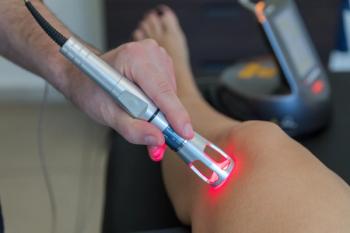
JAK inhibitors will change dermatologic therapy
JAK inhibitors have shown efficacy across several conditions due to the number and role of cytokines in the pathogenesis of these conditions, one expert says.
Unlike nearly any other single class of medicine, Janus kinase (JAK) inhibitors will be broadly used in dermatology, predicts Brett King, M.D., Ph.D., associate professor of dermatology at Yale School of Medicine, New Haven, Conn.
“Although the tumor necrosis factor (TNF)-alpha inhibitors have been wildly successful in medicine, their use in dermatology has been largely limited to psoriasis,” Dr. King says. “Even with the recent expanded use of adalimumab for hidradenitis suppurativa, it is still a relatively small number of patients in our clinics who are taking TNF-alpha inhibitors.”
In contrast, JAK inhibitors will show efficacy for the treatment of alopecia areata, vitiligo, atopic dermatitis, morphea, granuloma annulare and sarcoidosis, pruritus, lichen planus and psoriasis, according to Dr. King, who spoke at the 2019 Fall Clinical Dermatology Conference.
Currently, there are no JAK inhibitors approved by the U.S. Food and Drug Administration (FDA) for a dermatologic condition. However, Dr. King predicts the first approval within the next one to two years.
“It is a race between Eli Lilly’s baricitinib, Pfizer’s abrocitinib and AbbVie’s upadacitinib for the indication of atopic dermatitis,” he says.
All three medications are oral.
“In fact, the majority of JAK inhibitors in clinical trials in dermatology at this time are oral,” Dr. King says. “A role exists, however, for topical JAK inhibitors.”
For example, provocative phase 2 clinical trial results using ruxolitinib (Jakafi, Incyte) cream for atopic dermatitis “is showing efficacy that rivals triamcinolone 0.1% cream, a mid-potency topical steroid,” Dr. King says.
In addition, ruxolitinib cream is showing effectiveness in treating vitiligo.
The reason JAK inhibitors are effective across several conditions is due to the role of cytokines in pathogenesis of these conditions. Over 50 cytokines signal through the JAK-Signal Transducer and Activator of Transcription (STAT) pathway.
“Hence, a single mechanism of action, that is inhibiting the JAK-STAT pathway, can target numerous diseases,” Dr. King says.
Dr. King says the efficacy of JAK inhibitors in dermatologic diseases is often “outstanding” and that the safety profile seems good, based on clinical trials in dermatology to date.
“However, JAK inhibitors outside of dermatology have a black box warning,” he says. “The safety of this drug class for rhuematologic disease may not be the same as the safety signal in dermatology, where patients are often otherwise healthy and not taking myriad other medications.”
Still, it is possible that these medications will have a black box warning for dermatologic conditions, according to Dr. King, but it could be a class label as opposed to a label borne of clinical trial results in dermatology.
Disclosures:
Dr. King is a consultant and investigator and has served on advisory boards for several pharmaceutical companies developing JAK inhibitors for dermatology.
Newsletter
Like what you’re reading? Subscribe to Dermatology Times for weekly updates on therapies, innovations, and real-world practice tips.
















